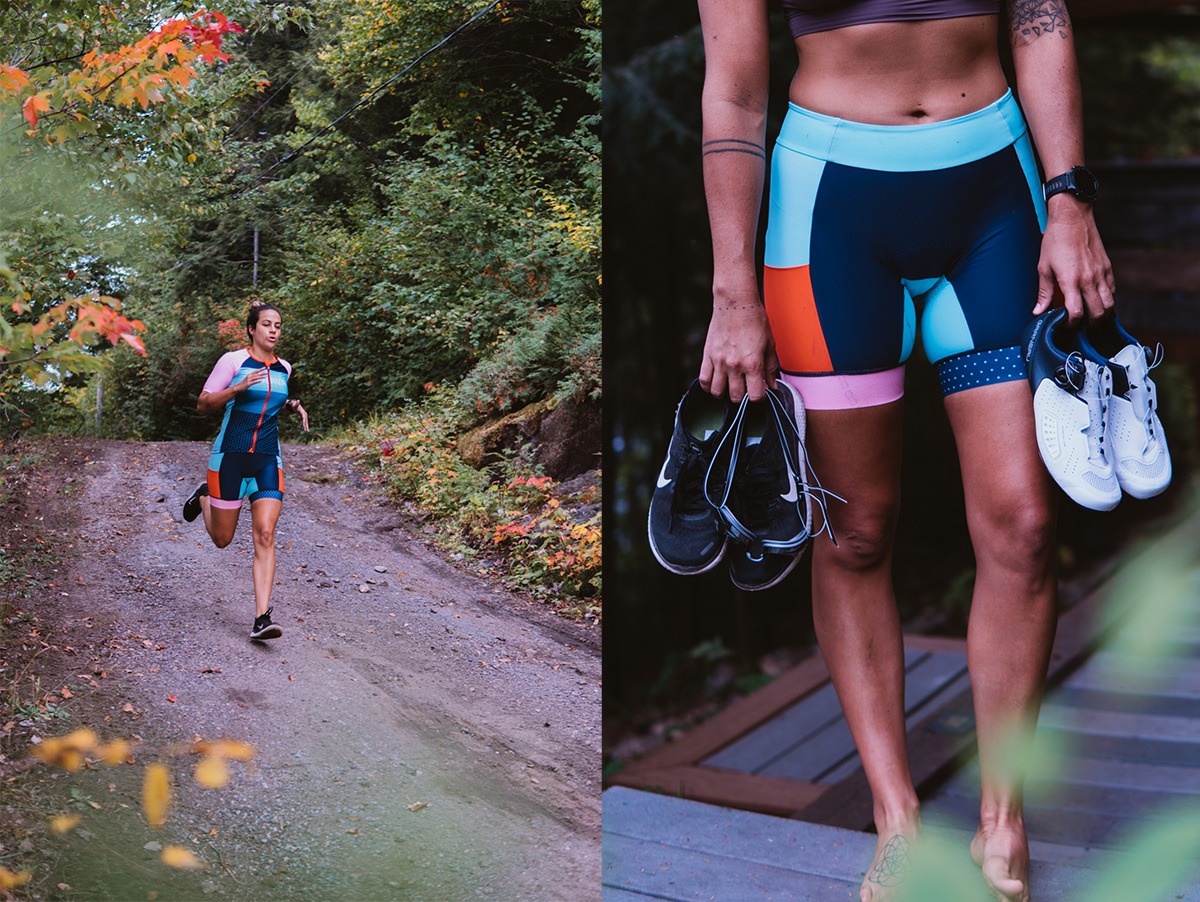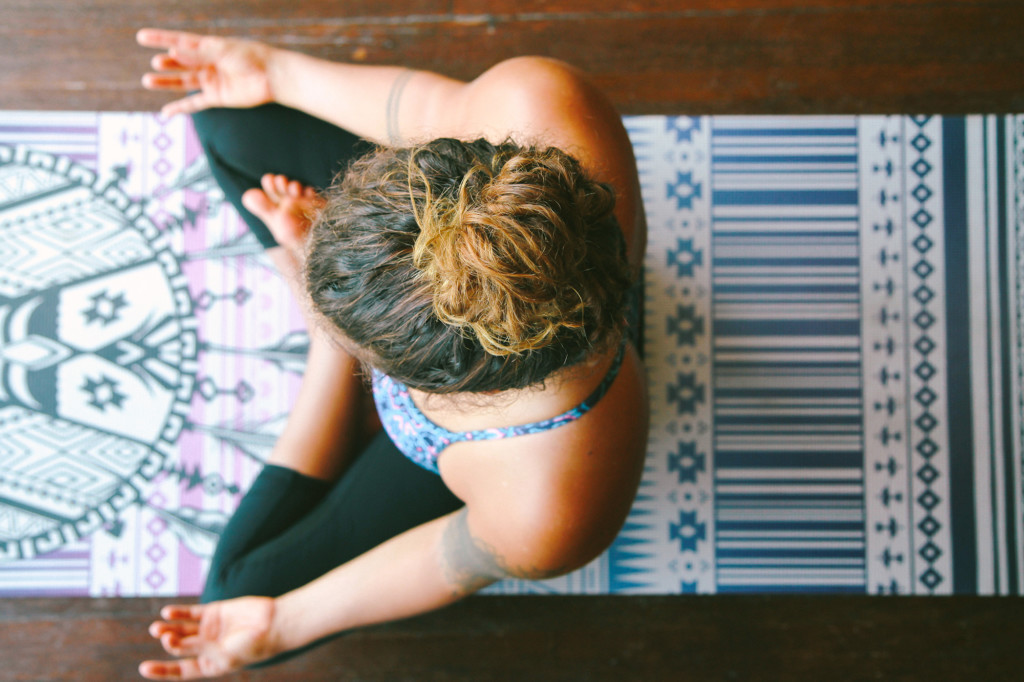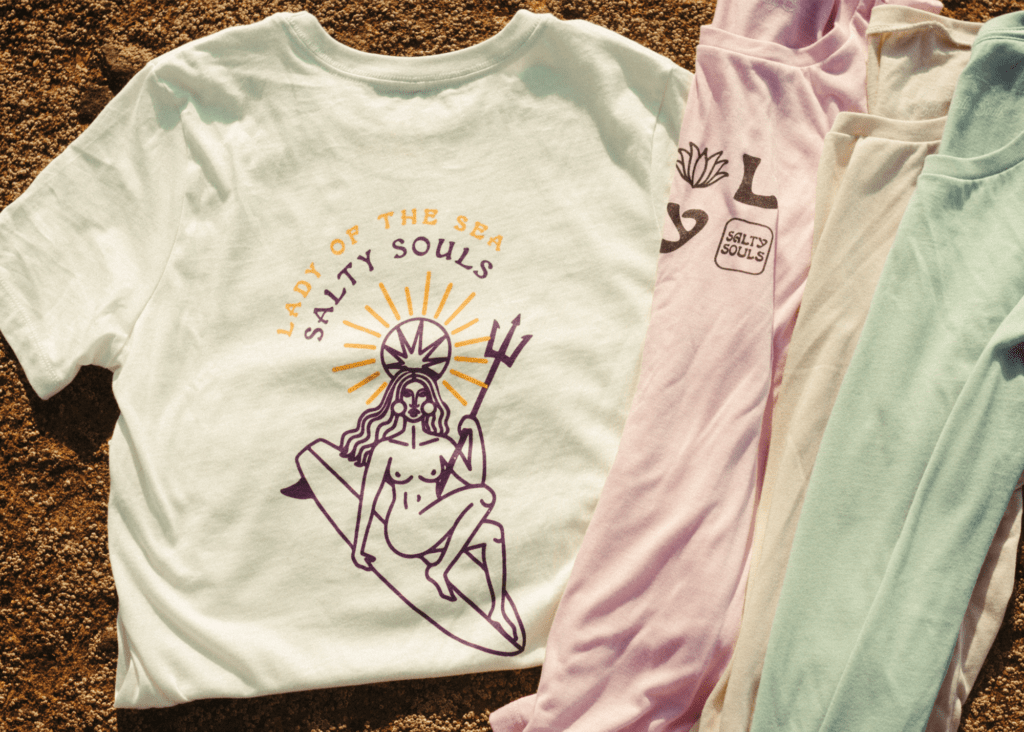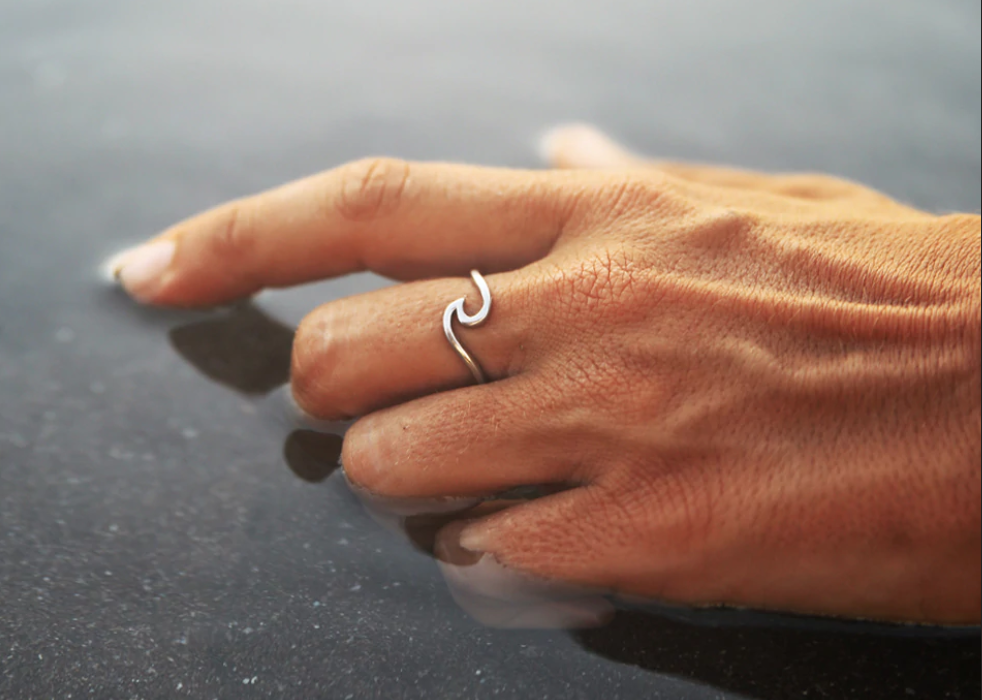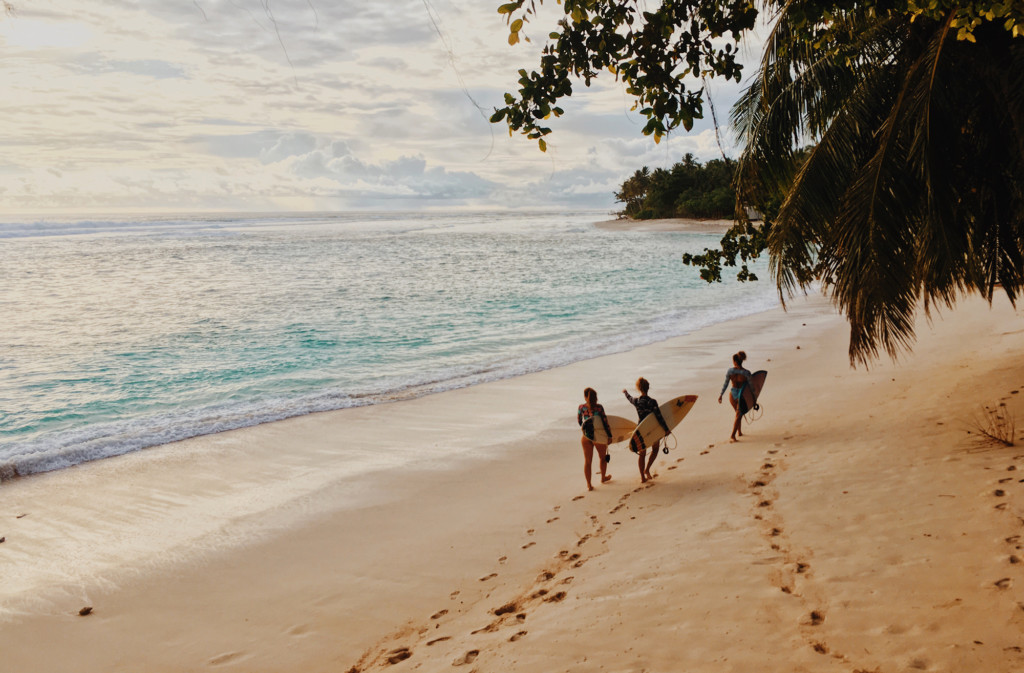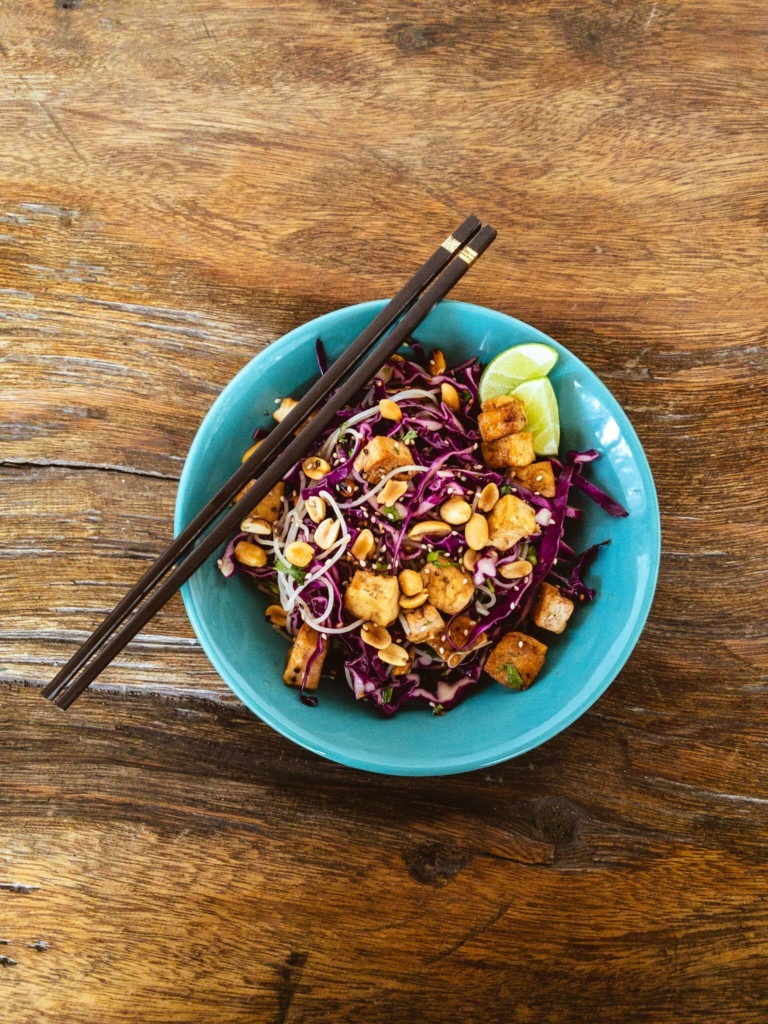Hi, my name is Erika. I’m 30 years old. I’m the fittest I’ve been in years, and dude, that feels amazing.
Here’s what’s written in between the lines: it wasn’t always like that.
I’ve always been an active person. More than the average Joe or Ginette. But somehow it wasn’t really reflected in my physique. I definitely looked strong, but not fit. And this something that has always been bothering me.
“Big Body”
One of my most painful memories is being given the nickname of “big body” by some kids on Indonesian island a few years ago. It echoed in my ears for years. There was obviously no vicious intention behind the words of these little ones. What they said was true; simple observation, no sugar coating. Kids are direct as fuck, they don’t tiptoe around these subjects. But maybe that’s what hurt me so much; the truth had been said out loud.
Before we get any further, let’s get something straight: In the following post, I’m not going to be tiptoeing around the subject either.
I’m fully aware that we are all made on different frames, and what works for one, won’t necessarily work for another. It has become extremely tricky to speak about appearance, corpulence, dietary choices without offending somebody.
Being skinny is different than being healthy.
Having fat doesn’t mean you are lazy.
Eating meat doesn’t mean you are savage.
Being a vegan doesn’t give you the right to be condescending.
I’m here to share my personal process, in hope that it might resonate with some people that feel the same way.
Ok, can we continue with the story now?
The size of my body wasn’t anything scandalous. But it was enough for me to feel discomfort; It became rather hard to cross my legs. I would get irritation from my thighs rubbing against each other when walking in a bathing suit. Not to mention my shorts that would always go up my crotch. Shopping had become a painful experience, because often the size L wouldn’t fit so well anymore.
I did not feel at home in my body anymore. I felt heavy and inagile. Maybe you know what I mean.
–> If you aren’t feeling at home in your body and that secretly makes you miserable, don’t just put your head in the sand, numb your pain with Friday night drinks, and surrender to the circumstances… Know that it is in your power to turn the tables and make yourself proud, if you want to make a change! If I’ve done it, so can you. 🙂
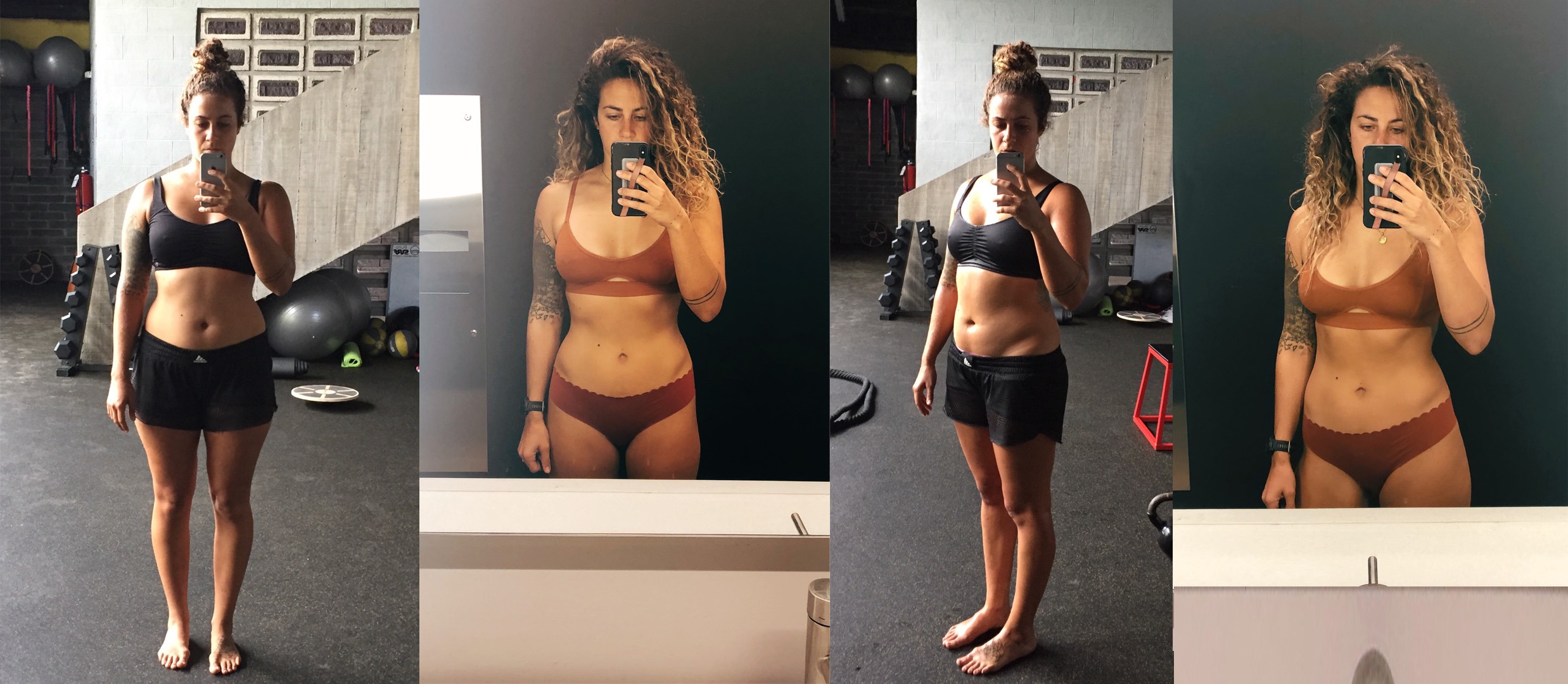
May 2018 vs. October 2019
The 3 Stages of becoming a more powerful being
Stage 1: Re/gain agility, shed some unneeded weight (physically/emotionally), find a support system. <—*WE ARE HERE*
Stage 2: Sign up for something tough, that demands discipline. Develop endurance.
Stage 3: Participate in this ultimate physical and mental challenge that scares you!
Stage 1: GOING “KETO”
All summer my boyfriend had been singing about the benefits of the keto diet —something I had actually never heard of but which had worked miraculously for him and his buddies.
The ketogenic diet is a low-carb, moderate protein and high-fat diet that shares many similarities with the Atkins and low-carb diets.
After reading more about it, and having him explain me the basic principles, I decided to commit to it for 30 days.
The results I have had, only from making change on my diet were astonishing and super encouraging after only one week. Plus, I haven’t felt hungry or restricted.
How the ketogenic diet works
The “keto” in a ketogenic diet comes from the fact that it allows the body to produce small fuel molecules called “ketones.” This is an alternative fuel source for the body, used when blood sugar (glucose) is in short supply.
On a ketogenic diet, your entire body switches its fuel supply to run mostly on fat, burning fat 24-7. When insulin and blood sugar levels become very low, fat burning can increase dramatically. It becomes easier to access your fat stores to burn them off. This is great if you’re trying to lose weight, but there are also other less obvious benefits, such as less hunger and a steady supply of energy (without the sugar peaks and valleys we can get from high-carb meals). This may help keep you alert and focused.1
Sugar
Sugar is found in all refined products of course: pastries, granolas, chocolate, jam, soda etc., in everything high in carbohydrates; bread, pasta, rice, alcohol, but also (and that’s the game-changer) in fruits and starchy vegetables!
That’s what you wanna say goodbye to.
Fat
I know it feels counter intuitive to eat fat to lose some. But has explained above, your body starts to operate on fat molecules when there is no more sugar to burn. Nota Bene: Some people have this wrong idea that going keto absolutely means eating bacon dipped in oil wrapped in butter on a steak. Dude, relax! Think avocado, nuts, olive oil, full-fat greek yoghurt, etc…
I’m going to lay the VERY BASIC principles of this way of eating, but I recommend you read some keto guides to understand better before getting into it. HERE & HERE are 2 amazingly simple resources.

Typical keto breakfast.
Basic rules:
Yes to Green veggies. Meat. Eggs. Natural fats.
No to Fruits. White carbs. Processed & fried food. Anything sugary.
Keep it SIMPLE. Find your top ingredients, cook simply, repeat. There’s absolutely no need to starve yourself.
-Foods to eat-
- Meat: Chicken, beef, lamb, pork, bacon.
- Fatty fish & shrimps: Salmon, trout, tuna, mackerel, etc.
- Eggs
- Non-starchy vegetables: Most green veggies (broccoli, cauliflower, asparagus, Brussel sprouts, cabbage, zucchini, kale, spinach, celery, pepper etc.)
- Dairy: Plain Greek yogurt (2-5% fat), cottage cheese, cheese, heavy cream, butter
- Nuts & Seeds: Almonds, walnuts, flax seeds, pumpkin seeds, chia seeds, etc.
- Healthy oils: Olive oil, coconut oil and avocado oil.
- Avocados
- Olives
- Berries (in small quantity)
- Condiments: You can use salt, pepper and various healthy herbs and spices.
- Beverage: water, sparking water, tea, unsweetened coffee
-Foods to avoid-
- Sugary foods: Soda, fruit juice, smoothies, cake, ice cream, candy, etc.
- Grains or starches: Wheat-based products, bread, rice, pasta, cereal, etc.
- Fruits: All fruit, except small portions of berries. Also, no dry fruits!
- Beans or legumes: Chickpeas, tofu, tempeh, peas, kidney beans, lentils, etc.
- Root vegetables: Potatoes, sweet potatoes, carrots, beetroots, parsnips, squash, etc.
- Low-fat or diet products: These are highly processed and often high in carbs.
- Some condiments or sauces: These often contain sugar and unhealthy fat.
- Unhealthy fats: Limit your intake of fried food, processed vegetable oils, mayonnaise, etc.
- Alcohol: Due to their carb content, many alcoholic beverages can throw you out of ketosis.
Here some questions that people frequently ask:
- I’m vegetarian, can I still do the Keto diet? >>
- Will saturated fat clog my arteries and cause me a heart attack? >>
- Is Keto diet bad for the environment? >>
- Is ketosis safe and does it have side effects? >>
- Eating low carb or keto while breastfeeding >>
- Can I ever eat carbs again? Yes, of course! However, it is important to significantly reduce your carb intake initially (1-3 months). You’ll eventually be able to reincorporate good carbs and keep your weight steady. Plus, your cravings will have significantly have reduced.
- Do I need to track all my macros? I didn’t. I chose to do it in an intuitive manner, listening to my body, and being realistic. But if you are a systematic kind of person, one would agree that tracking your macros is probably the best practice.
- Can I drink alcohol? Ideally not. Alcohol is often high in carbs and sugar. And, truth being said, when you are hangover you just want to eat crappy food…. But if you do, vodka soda is a good option, or 1 glass of red wine, occasionally!
Stage 2: TRAINING FOR TRIATHLON
“I think it’s important, if you want live life to the fullest, that you choose a difficult quest, a journey, an obstacle, a rite of passage or some other amazing feat of physical and mental performance that you makes you a little bit scared to do.” – Ben Greenfield
So by now you understand that my goal this year was to considerably upgrade my health and my fit-game.
As I said, I’ve always been active (training or surfing 3-6x week) but it was time to set a new objective. I wanted to see how far I could push my body, I need to set the bar high, to stay driven and motivated throughout summer.
The 3 Stages of becoming a more powerful being
Stage 1: (Re)gain agility, shed some unneeded weight (physically/emotionally), find a support system.
Stage 2: Sign up for something tough, that demands discipline. Develop endurance. <–*WE ARE HERE*
Stage 3: Participate in this ultimate physical and mental challenge that scares you!
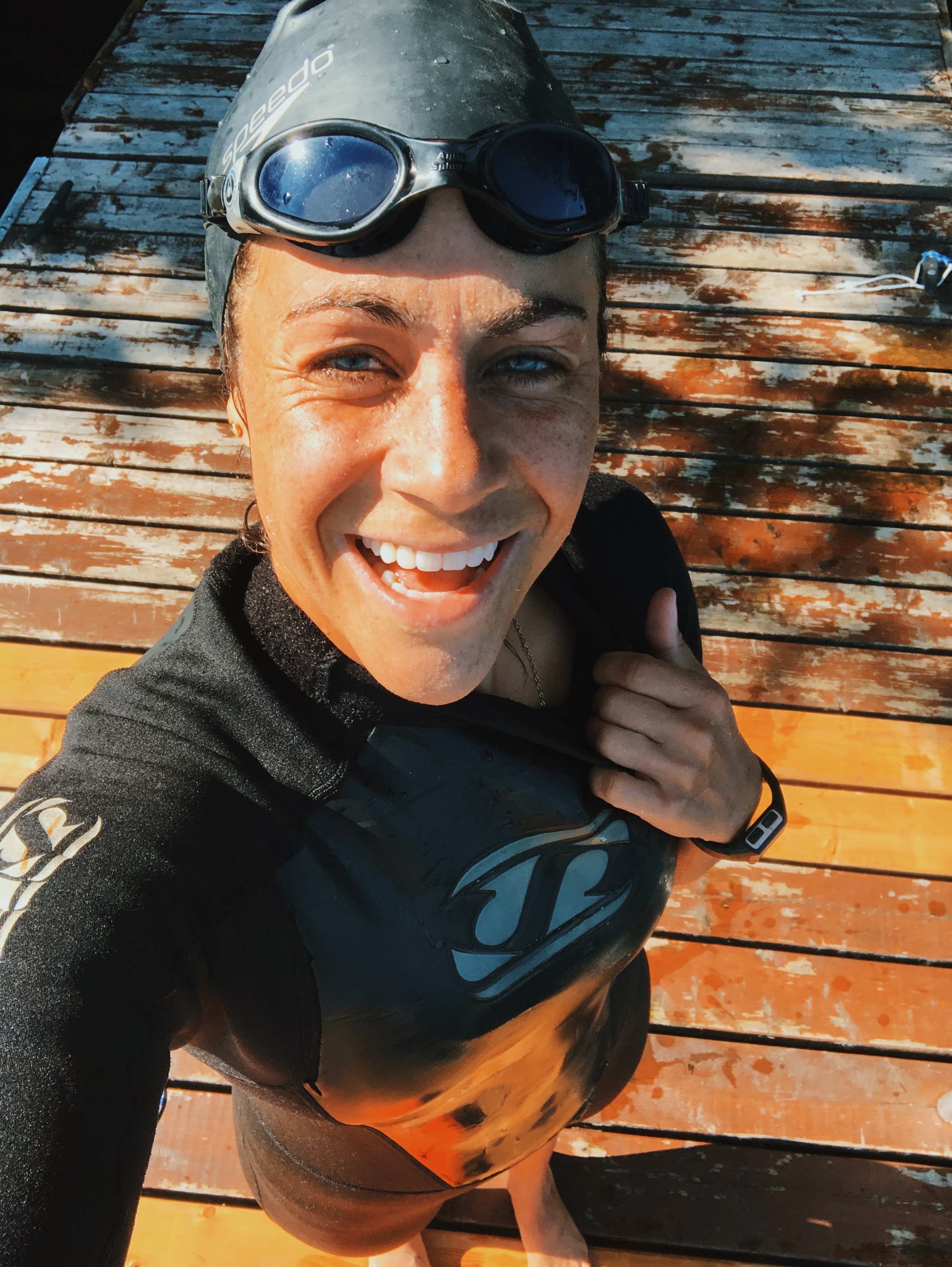
In isn’t your body, that is weak, it’s your mind.
“The 40% rule : When your mind is telling you that you’re done, that you are exhausted, that you cannot possibly go any further, you’re only actually at 40% of your capacity. ”-David Goggins
Deciding to sign up for a triathlon was rather impulsive. I needed a challenge, and found this one race happening close to our cottage, at the end of summer – which would give me the whole season to train (about 15 weeks).
My boyfriend decided to sign up with me. Boom. We were in this together. Even better!
The race I signed up for was in between the “Sprint” and “Olympic” distances.
1km open water swim
30km cycling (in a very hilly national park)
8km trail run
Estimated completion time : 2h15
Now, the thing is I had never swam this long of distance without a surfboard.
I had never even done road bike, like ever.
And I hadn’t run long distances in years.
New. New. and Old. Signed up anyway!
How to learn the basics
Triathlon, because it implies 3 disciplines, is obviously pretty technical. I recommend finding a person in your surroundings that is pretty experienced in ONE of those disciplines and go train with him/her to get some advice. Especially, in the discipline you are the least experienced. There is absolutely no shame in being a beginner at anything.
Swimming
Swimming, for me, is where I’m advantaged. I was doing competitive swimming when I was young, competitive springboard diving, and now I surf most of the year. Therefore, I’m very comfortable in water, no matter the weather, and I’ve got good upper body strength. But I know that it’s most people’s biggest struggle…
Get swimming lessons! Like seriously, why not? Swimming like a little dog is just not gonna do it. Learning to keep your legs to the surface, to improve your stroke, your breathing technique…You want that!
Secundo, make sure you find a lake (or the ocean,) where you can go practice in open water. Training in a pool is good, but it’s a world of difference. Open water is definitely scarier and having no marker to stay oriented adds a layer of difficulty.
Finally, you might be happy to learn that for a lot of events, wetsuit is required (when water bellow 78F). Although it adds a bit of resistance on the arms, it surprisingly increases your floatability and it makes you body more hydrodynamic.
Here’s a good article on How to improve your triathlon swim >> read more
*Tip*: If you don’t want to buy a wetsuit just yet, you can sometimes rent one on the event site! #smart
Cycling
I was very happy to have my parents to teach me cycling. Yes, my parents! (They were ecstatic to do so ahah!) They both experienced cyclers and they took the time to not only land me a bike for the season, but show me how to switch gears, how to leverage strength on my pedals, how to change a flat tire eheh! #useful, and showed me different bike-friendly rides (not easy to find 30+km rides without holes or traffic light in Quebec…).
But then, again, as my dad said, there’s only one way to get better at cycling: Log more kilometres in those legs!
*Tip*: Chances are you don’t want to invest $15 000 in a bike for a race, not knowing if you’re even going to like it. What if you look for used bike online? Or someone in your family that has one they really aren’t using…? In any case, make sure to go to a specialized boutique for a positioning. Then you only need invest in shoes :).
Running
Running is probably the most intuitive for most, but a lot of people are getting injured doing so. If you’re running on concrete- it’s high impact! Knee pain, shin splints, if you know, you know!
*Get the right shoes. I highly recommend going to a specialized boutique where they will have you run, analyse your biomechanics and foot arch to find the most appropriate shoes. I’m a fan of minimalistic shoes, but again I’m barefoot most of the year and I’m a yogi, which have both allowed me to considerably build feet, toes and stabilizing strength!
*Always stretch & use a roller to relax your sore muscles! Find my full body stretch and yoga videos here. Also, have you ever tried Myofascial Release for Lower back, hips & quads? Yep, thank me later.
*Best way to become better, is to train with someone better! Having a running buddy is bliss, especially if he is 6ft3 like my partner, which definitely pushes me to pick up my pace!
Fun book about running I highly suggest: Born to Run: A Hidden Tribe, Superathletes, and the Greatest Race the World Has Never Seen
Helpful apps /tools
Buying a training watch has been a big upgrade. I really wish I’d buy it sooner than 1 week before my race. LOL. Caring your phone all around is annoying and impossible in a lake, indeed. I personally have the Garmin ForeRunner 735xt and I love it!
Also, do you know about the Strava app? It is so motivating and fun to see a lot of people you know are cycling, running and swimming too! Also, it syncs automatically with the datas of your watch.
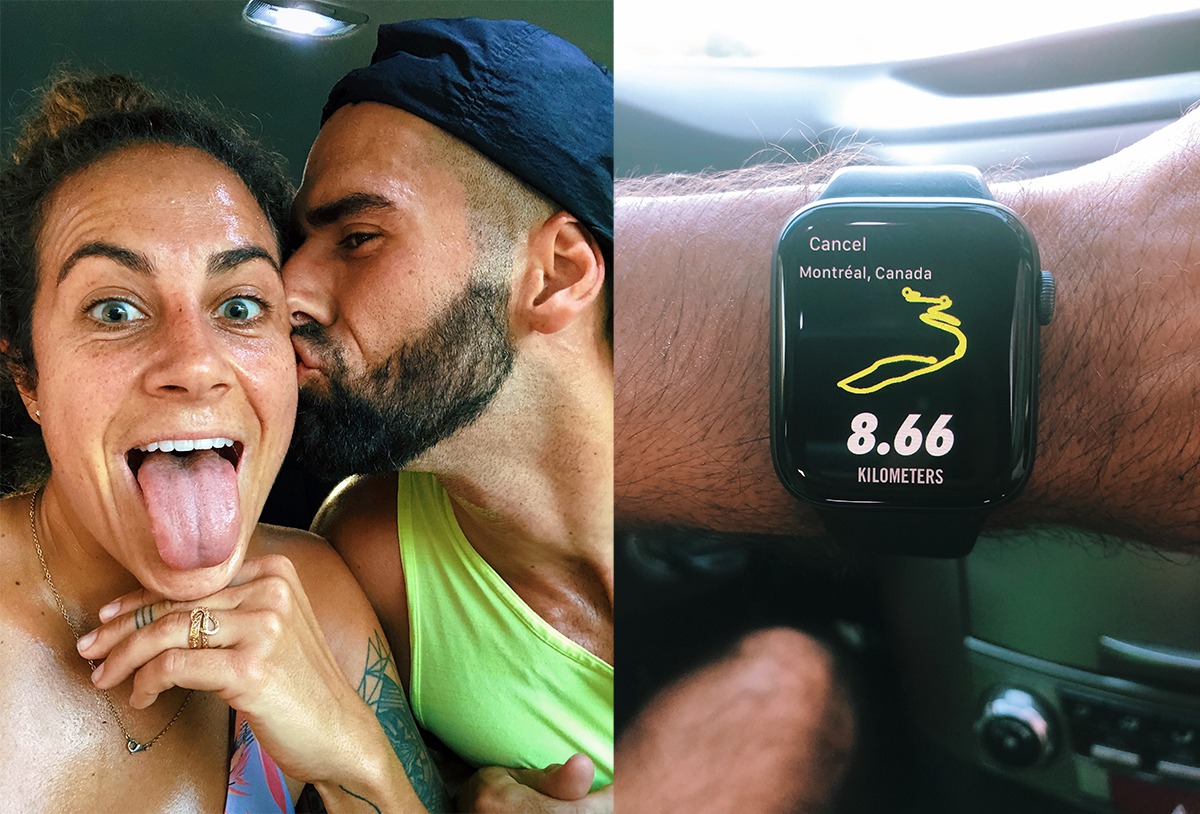
Reaching new highs! First time I ran 8KM in a trail aka the triathlon’s distance.
Top 5 TIPS to TRAIN WISELY!
1) Try to do 2 trainings of each discipline per week; 1 X endurance (distance) / 1 X intensity (strength, sprint). Planning your workouts in advance is wise, and very important : DON’T NEGOTIATE WITH YOURSELF. We never regret working out, but we always regret not doing it!
2) Increase your volume gradually by about 10% per week and beginning to approach race intensity. Progression is key — and it’s always encouraging to see that what was once hard, has slowly been made easy! So for example, if week one your long distance run is 5km, next week you would run 5.5km, following one, 6km. etc.
3) Brick training – Once you start getting pretty comfortable in every discipline, start to combine them! When you get off your bike, your legs will most likely feel like heavy wooden logs and you might not feel your feet anymore… In a triathlon, you obviously don’t compete each phase of the race in isolation; the transition is almost a fourth discipline. It’s important to train accordingly and practice these transitions from one exercise to another within your training regimen.
“This heavy feeling in your legs, in my opinion, is why it is referred to as a brick workout.” – Jennifer Bayliss
Here’s a reference on brick training for beginners >>
4) EXHALE! We definitely underestimate the power of our breath, and learning to master it might just make you a super human. Focus on your out-breath; long and steady exhalation, in every discipline. Exhaling all CO2 is important, because it isn’t the lack of O2 that causes us to feel asphyxiated, but rather the build up of CO2. When I catch myself feeling out of breath, I do 3-4 rounds of strong exhale and full natural in-breath, and it often feels like a reboot.
How learning to control your breath will make your a superhuman >>
5) I highly recommend going to do at least one practice on the race course previous to the event so you get to know your itinerary. There’s a 100% chance you’ll be nervous morning of the race, and if you don’t really where you are going, it’s worse. Get comfortable with the race environment. You should be able to visualize your game-plan, step by step the night before, and how’s the best way things could unfold.
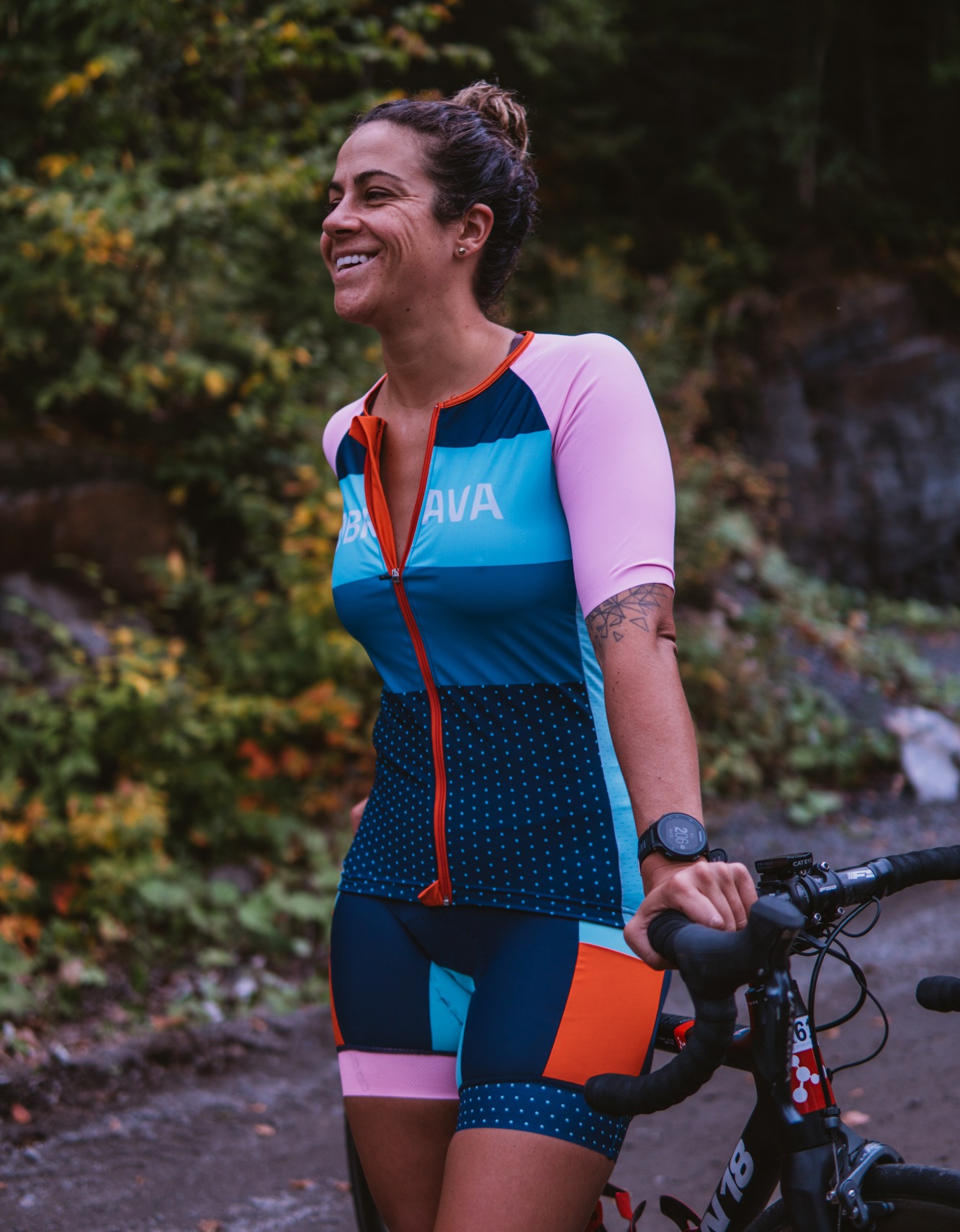
Stage 3: Participate in this ultimate physical and mental challenge that scares you!
I was hyper nervous the morning of the race (might have cried in the car…). Why so, if I had been training for this precise event all summer?
Because I wanted to perform, not just finish the damn thing. Like I actually wanted to kick some ass! Haha.
But hey, a my race went pretty well; I finished 9th in my age group and 21th overall women. Not bad for a first!
Feeling: Proud & satisfied! ✔
CONCLUSION
A year after having started this journey, I’m feeling on top of the world! I’ve dropped a few jeans sizes, found a sustainable balance outside of keto, my mind is clear, I’m energetic and driven. And, well, I fell in love with endurance training.
Now your turn! 🙂



